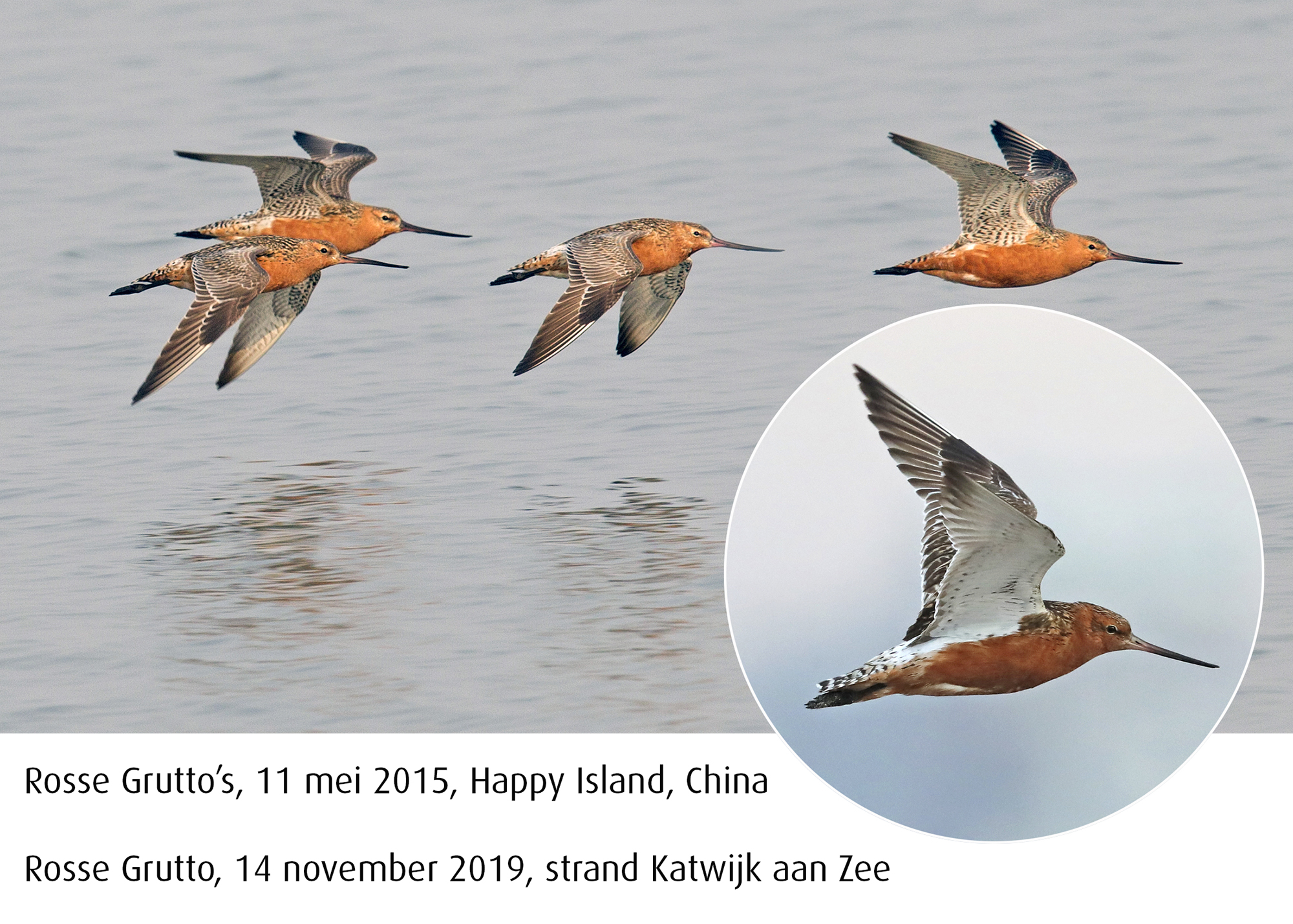Rosse Grutto
Limosa lapponica · Bar-tailed Godwit
 Rosse Grutto ·
Limosa lapponica
·
14-11-2019 · René van Rossum
Rosse Grutto ·
Limosa lapponica
·
14-11-2019 · René van Rossum
| Datum | 14 November 2019 |
|---|---|
| Locatie | Strand Katwijk aan Zee |
| Fotograaf |
|
| Bekeken | 5312 × |
Ik zat mijn foto's van China wat door te spitten en zag nu pas dat ik daar de ondersoort 'baueri' had gefotografeerd met een heftig getekende ondervleugel. Het rondje eronder is de 'lapponica' met een vrijwel geheel witte ondervleugel. Voor 14 november vind ik het vreemd dat hij al - nog in zomerkleed is ... |
Discussie
Peter de Knijff
·
4 December 2019 16:47
Er zijn goed gedocumenteerde gevallen van overwinterende Rosse grutto's in de Delta die de hele winter in zomerkleed rondbanjerden.
Eduard Sangster
·
4 December 2019 19:04, gewijzigd 6 December 2019 13:14
René van Rossum
·
6 December 2019 10:15
Bedankt voor de info Peter en Eduard !
George Sangster
·
11 July 2024 09:25, gewijzigd 11 July 2024 09:28
Conklin, JR, Verkuil, YI, Lefebvre, MJM, Battley, PF, Bom, RA, Gill Jr, RE, Hassell, CJ, ten Horn, J, Ruthrauff, DR, Tibbitts, TL, Tomkovich, PS, Warnock, N, Piersma, T, & Fontaine, MC 2024. High dispersal ability versus migratory traditions: Fine‐scale population structure and post‐glacial colonisation in Bar‐tailed Godwits. Mol. Ecol. e17452.
Een paar quotes uit het artikel:
"The final data set comprised 184 unrelated bar-tailed godwits genotyped at 14,318 unlinked high-quality SNPs; this included 15–31 individuals in each of seven hypothesised populations, but only three purported anadyrensis individuals"
"The first three axes (PC1–3) of the PCA explained 4.0% of the total genetic variation (Figure 2a). On PC1, individuals were essentially distributed on an axis of longitude in three clusters: a western Palearctic group containing all of lapponica, taymyrensis and yamalensis; an Alaska group containing all of baueri; and an intermediate group of menzbieri, suggesting an admixed origin (Figure 2a)."
"in genome-wide SNPs, we found that lapponica was strongly differentiated from taymyrensis and yamalensis, which were weakly differentiated from each other"
"We found unexpected structure among samples collected in the Dutch Wadden Sea during mid-winter, purported to belong to lapponica (Duijns et al., 2012): of these 27 samples, only six grouped with the four individuals sampled in the breeding area of lapponica, whereas 19 clearly clustered with taymyrensis, and another two appeared to represent admixture between the two subspecies"
"our results strongly indicate that both taymyrensis and lapponica are present in western Europe in the winter"
"Within baueri, we confirm that behavioural and morphological differences observed along a latitudinal cline in the Alaska breeding range (Conklin et al., 2010, 2011; Conklin & Battley, 2011) are mirrored by a similar genetic cline (Figure 2). Bar-tailed godwits from the entire Alaska breeding range regularly mix at non-breeding sites in New Zealand (Battley et al., 2020; Conklin et al., 2011) and Australia (Wilson et al., 2007) and at migratory staging sites in the Yellow Sea and south-west Alaska (Battley et al., 2012). On northward migration, baueri also mixes freely with menzbieri in the Yellow Sea (see Figure 1; Battley et al., 2012; Choi et al., 2015). The clear genetic structure maintained among (sub-) populations that regularly meet in the non-breeding season implies that behavioural rigidity, in terms of strict migration timing and fidelity to a breeding region, is sufficient to preclude panmixia among and within subspecies."
Gebruikers van het forum gaan akkoord met de forumregels.
